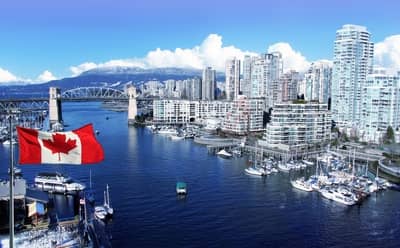
Aaahhh . . . Hawaii. The quintessential tropical paradise. For decades travellers and dreamers alike have fixed their sights on the sun and beaches of Hawaii for a getaway. But have any of them done it for $1,000 per month? Over the next few minutes, you’ll get seven tips for living in Hawaii on $1,000 per month . . . er . . . maybe.
Countless Americans have moved from the mainland to one of the 137 islands (typically one of the 8 largest) that make up the state of Hawaii. Dreaming of sand and surf and a lush tropical lifestyle is quite popular. Jumping into that lifestyle, however, is a true commitment.
In recent years, the population of Hawaii has been in a constant state of decline. The major issues leading to this decline are the high cost of living, sky-high housing prices, heavy regulations on businesses, and other issues. More people are moving out of Hawaii to the mainland than moving to Hawaii.
But let’s say you want to put on your lei and hula skirt and learn to surf the beautiful beaches of Oahu’s North Shore. And let’s say that you want to do it for $1,000 a month. Can you?
One glaring reality: Unless you have the outright cash to buy a home or condo (or shack) in Hawaii, it’s pretty safe to say you’ll be renting, because a mortgage in Hawaii, even at a great interest rate and price, will eat up nearly all of your $1,000 per month budget.
So, this article will focus on a person or family that will be renting.
While there’s no certainty due to different people having different needs, it’s possible. This post will give you seven tips on how to live in Hawaii for as cheap as possible, and maybe even as low as $1,000 a month.
It will definitely be a challenge and require some creativity, so let’s take a closer look.
How $1,000 Per Month Breaks Down
Let’s face reality. $1,000 divided by 30 days is $33 per day. In other words, let’s cut the BS and admit it, $1,000 really is not a lot of money in today’s day and age.
The average cost of a rental in Honolulu is approximately $1,627. It’s safe to say that anything less than $1,000 per month in rent will be tiny digs. But then again, you could live dirt cheap in a shack on a lava flow with no electricity or water source.
Assuming you’re living in a shack or your van or with roommates, your housing is going to eat up 30-50% of your monthly budget. Taking fuel for your car and food to survive into consideration in one of the most expensive states, you better be eating Ramen or growing your own food if you want to minimize nutrition costs.
Then you have to factor in costs of living such as insurance, clothing, maintenance, and other assorted fees. $1,000 in Hawaii will go quick.
| How to Live in Hawaii on $1,000 Per Month |
|---|
| 1. Plan Ahead |
| 2. Sell Your Stuff |
| 3. Plan Your Activities |
| 4. Invest in Recreational Equipment |
| 5. Forgo the Car |
| 6. Buy Local |
| 7. Live in Oahu |
Tip #1: Plan Ahead
Every successful major decision in life begins with proper prior planning. Living in Hawaii on $1,000 per month, either as a new resident or a current resident looking to cut costs, requires a lot of planning ahead. If one simply books a flight and shows up with a couple of bags and no plan, that’ll make for a rough start in the new state.
Be realistic about what you can do. Although the world loves dreamers, a family of 5 probably can’t live in Hawaii on $1,000 per month (or probably anywhere, for that matter) unless they have zero debt and live an extremely frugal existence. But a single person or a couple with only one child may be able to pull this off in “relative” comfort.
Think about your current employment situation. Hawaii is an island state with high taxes and high consumer costs and job opportunities are actually somewhat limited. If you don’t have a job already lined up in Hawaii, you would need to have sufficient savings to provide you with your $1,000 per month.
How long will you live in Hawaii? Is it your plan to retire there or be on a 5-year plan and then make a decision on whether to stay permanently? Which of the islands do you want to live on, and more importantly, which of the islands can you afford to live on?
Recommended Financial Geek Article: How to Save Money for Travel as a Teenager? (6 Steps)
Tip #2: Sell Your Stuff
Offloading your furniture, unnecessary personal items, and anything you can’t use in Hawaii for cash will help fund your travel expenses to Hawaii and prevent extra shipping costs.
Perhaps you’ll even have enough left to use for living expenses for the first few months if you don’t have a job lined up. Most rentals in Hawaii come furnished, so you likely won’t need this stuff anyway.
Tip #3: Plan Your Activities
What are you going to do in Hawaii? What goals for living in the Aloha State do you have in mind? Hiking is virtually free of monetary charge and Hawaii offers miles and miles of amazing hiking trails, especially on Oahu. Laying on the beach and surfing the board you own are also cheap recreational activities.

On the other hand, if you’re a foodie, you’ll pay a pretty penny for that in Hawaii. Local cuisine in Hawaii is one of the highest in the nation. If you’re trying to get by on $1,000 per month as a foodie, good luck.
Tip #4: Invest in Recreational Equipment
If you rent a surfboard every time you go surfing, you’ll wind up paying more than if you bought one right at the outset. A brand new surfboard for an amateur surfer runs from $300 to $1,000. If you buy your board new, it’ll pay for itself in a month or so in the context of rental costs over that same time period.
Same goes for beach gear, hiking gear, fishing gear, and paddle boards. Rather than pay endless rental fees, spend your money wisely up-front to purchase good equipment. And again, in regard to planning ahead, make sure that you have the room to store this stuff.
Tip #5: Forgo the Car
This is arguably the hard one. Some will argue that Oahu and Honolulu are the only two places you can live in Hawaii without a car. The outer islands will be a very challenging place to live without your own wheels. But unless you outright own a car, living in Hawaii on $1,000 per month will be very tough with a car payment.
Fuel prices in Hawaii are always higher than most mainland states and they are currently much higher than ever at $4.17 per gallon. If you can make it work, it makes sense to sell your ride and rely on public transportation, but Hawaii’s public transportation is all via bus, and the bus doesn’t go everywhere. Oahu and Honolulu offer the best public transportation, so you’ll need to own a car or rely on taxis, ridesharing, or services like Uber on the outer islands.
If you’re trying to live on $1,000 per month in Hawaii, a vehicle, even without a payment, will significantly cut into your budget. Fuel costs, insurance costs, registration, and maintenance add up.
Tip #6: Buy Local
Getting food to Hawaii increases the cost of the food to the consumer. Rather than purchase food and perishables that carry the weight of transport and shipping costs, search for local growers and producers and get your goods straight from the source.
Try a local supermarket or farmer’s market. If you want a drink, search out happy hours in your area. And of course, if you’re headed to the beach to fish or sun or surf, pack a lunch!
Tip #7: Live in Oahu
Of the big eight, Oahu will ultimately check most of the “want list” boxes. Oahu boasts the city of Honolulu, with a population of roughly 350,000. Oahu has a great public transportation system and is home to the North Shore, Hawaii’s premiere surfing spot.
And for the most part, there are more opportunities on Oahu than any of the other islands. From jobs to housing to hiking to local cuisine, Oahu has it all.

Wrap up
So, there you have them – seven actionable tips to help you live on $1,000 a month in Hawaii – maybe. While it may be a stretch, especially in those months where you experience extra expenses, living on $1,000 per month in Hawaii may be possible.
Follow these tips and help reduce your monthly living expenses to as close to $1,000 per month as you can.
Enjoy the sun!
Geek, out.






